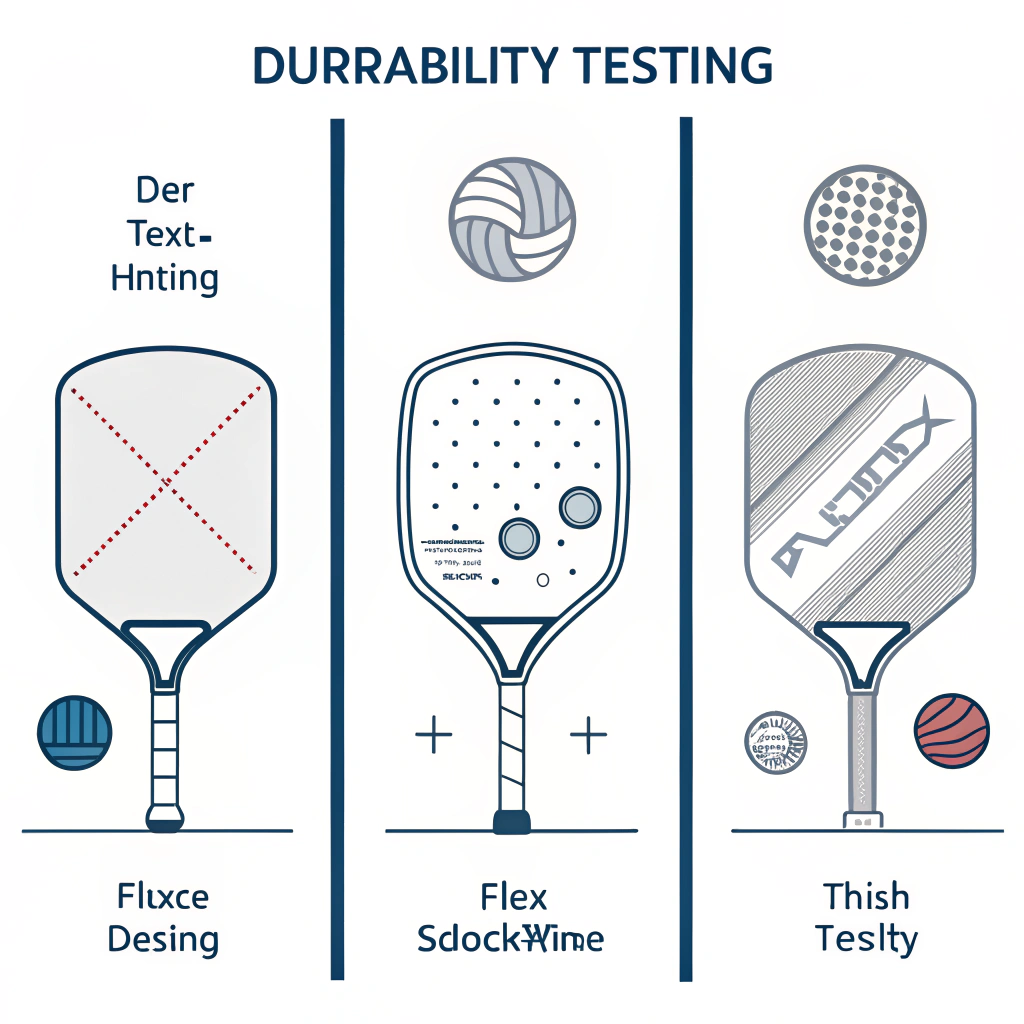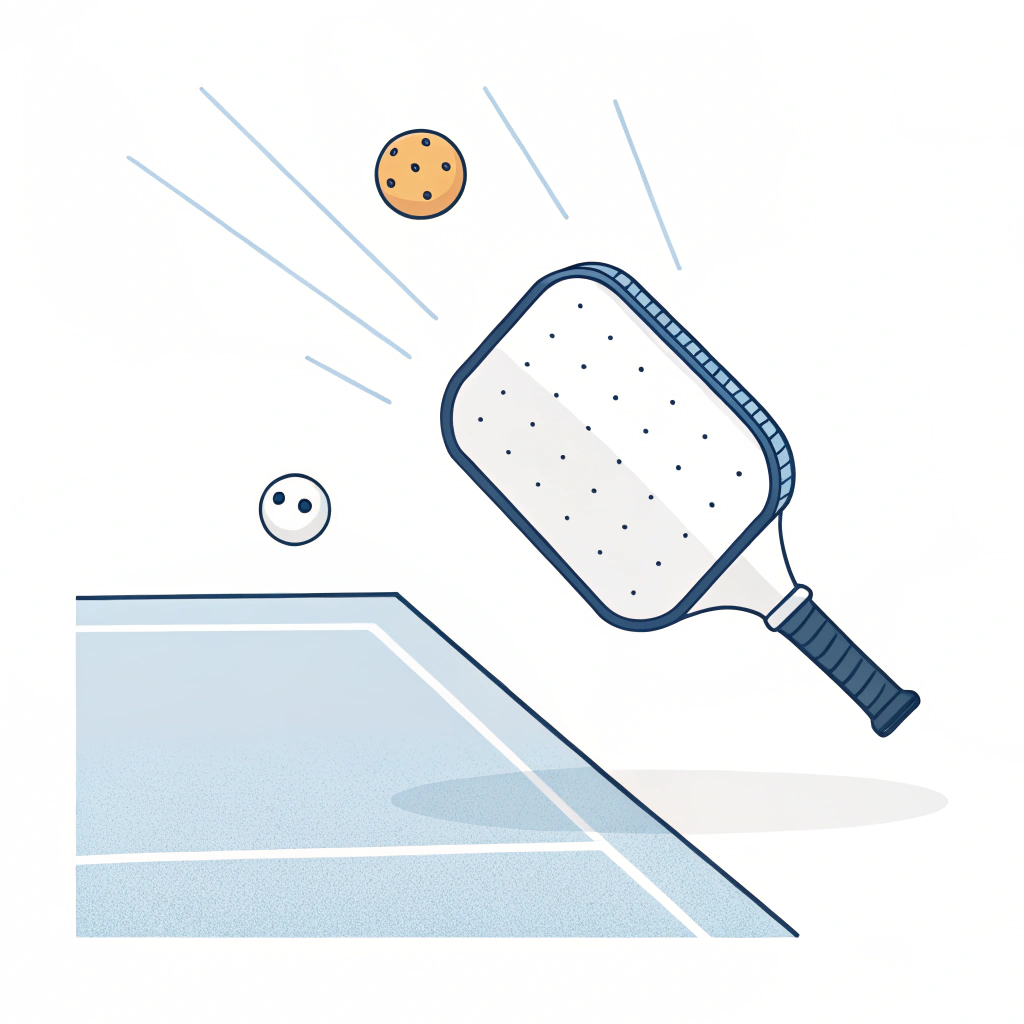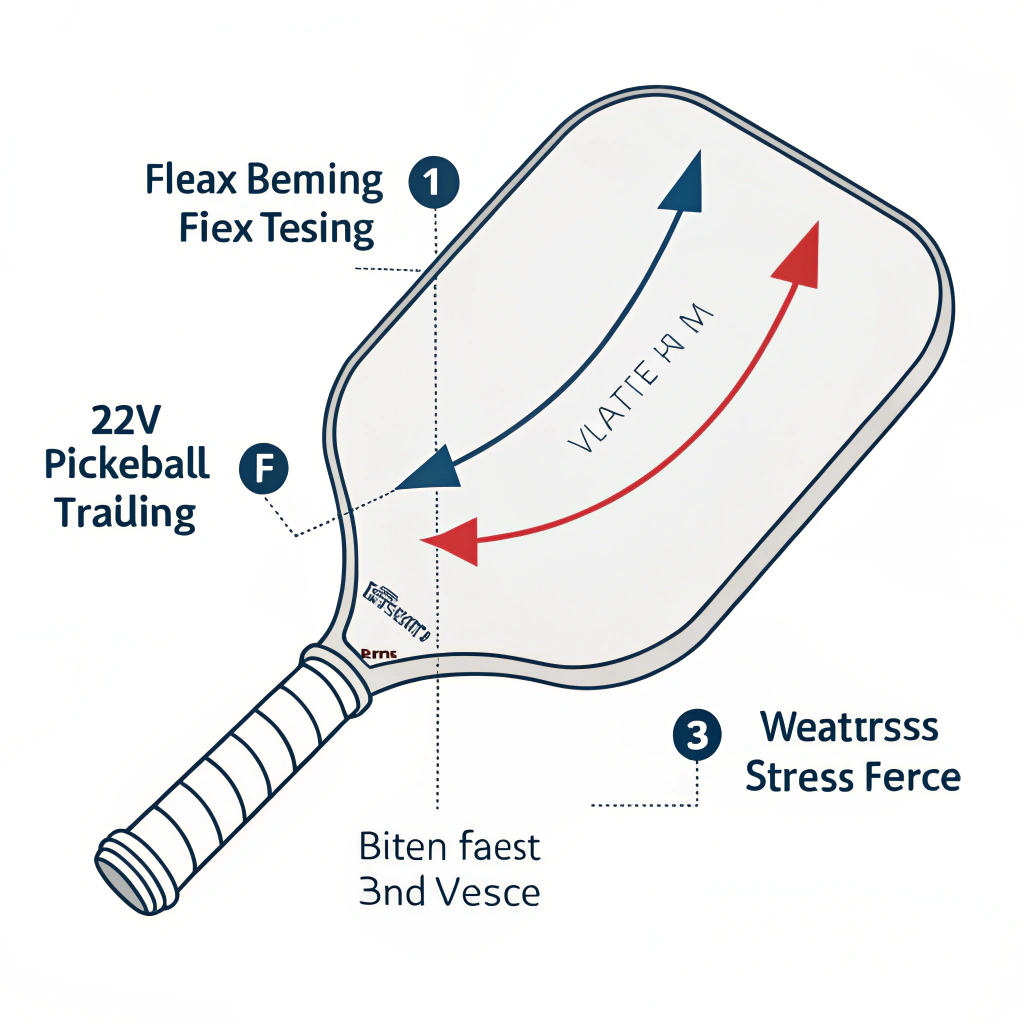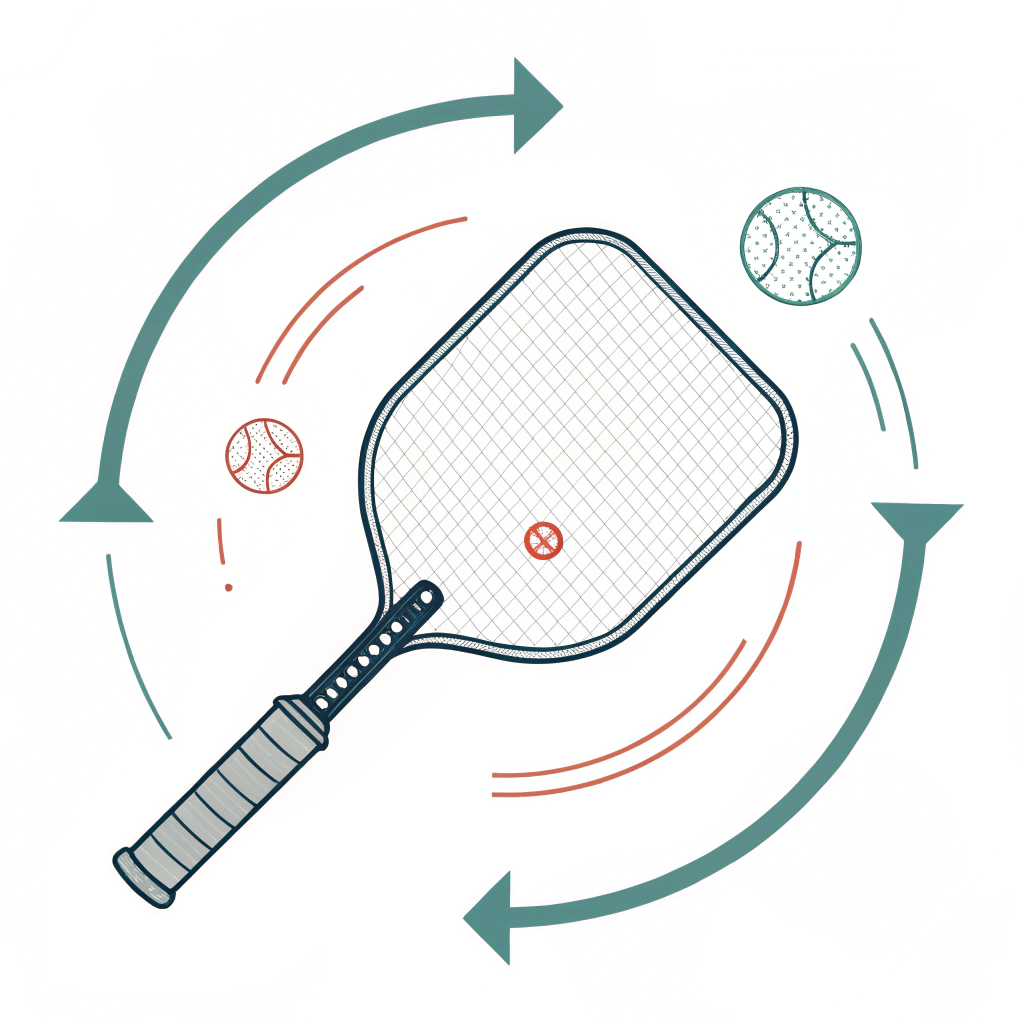The durability tests—drop, flex, and fatigue—provide critical validation of product reliability by replicating real-world stress and wear conditions. These tests help engineers refine materials and designs for optimal long-term performance.
In the world of high-performance pickleball equipment manufacturing, ensuring durability and reliability are essential for both competitive and recreational use. At NEX Pickleball, our focus on robust durability testing enables us to produce paddles that stand up to the rigorous demands of the game. This article examines the technical details behind drop testing, flex testing, and fatigue testing and explains how these methodologies confirm the durability and performance of our paddles. By understanding the testing process and its impact on material selection and design optimization, product quality managers and R&D engineers can make better procurement decisions.
High-performance sports equipment must endure repeated impacts, continuous strain, and various mechanical stresses over time. For pickleball paddles, even minor structural failures can affect gameplay, safety, and overall product quality. The central issue lies in validating that the chosen materials—whether carbon fiber1, fiberglass2, or composite blends—can maintain their integrity over prolonged use. This critical evaluation involves three primary types of durability testing:
• Drop Testing: Simulates impacts and accidental drops during play.
• Flex Testing: Assesses paddle resilience under bending stress, ensuring optimal control and responsiveness.
• Fatigue Testing: Measures performance degradation due to repeated stress cycles, supporting long-term reliability.
These tests not only inform material selection but also guide manufacturing decisions for better quality control.
Understanding mechanical stress and the corresponding failure points is essential. There are several reasons why durability testing is a cornerstone of our quality assurance process:
- Material Endurance: Different materials have unique properties—3K Carbon Fiber (note: not marked as an external term as it is a variant of carbon fiber), 12K Carbon Fiber, and T300 Carbon Fiber3 offer varying levels of flexibility and strength. Testing reveals which material aligns best with intended usage scenarios.
- Structural Integrity: The production processes—hot pressing, cold pressing, and thermoforming4—can affect material properties. Durability tests ensure these methods do not compromise paddle performance.
- User Experience: A paddle that performs reliably under stress offers better power, control, and longevity. This is vital for maintaining player performance, especially in competitive settings.
Moreover, by pinpointing failure modes early through rigorous testing, engineers can optimize design choices and manufacturing processes to prevent premature product failures.
Drop testing is designed to simulate real-life scenarios such as accidental falls or impacts during normal play. The process involves dropping paddles from predetermined heights onto various surfaces to assess:
• Impact Absorption: How well the paddle materials absorb shock.
• Surface Integrity: The ability to resist surface cracks, dents, and delamination.
• Structural Resilience: Ensuring the paddle’s core and composite layers remain intact after repeated impacts.
The following table summarizes the advantages and disadvantages of drop testing:
| Test Aspect | Advantages | Disadvantages |
|---|---|---|
| Impact Simulation | Mimics real-world impacts effectively | May not account for all types of accidental impacts |
| Material Assessment | Identifies weak points and crack propagation | Repeated tests may alter material properties over time |
| Quick Feedback | Fast evaluation of structural integrity | Requires accurate drop height measurements |
Attention to detail during drop tests allows for adjustments in material layering and adhesive applications in composite designs.
Flex testing evaluates the paddle’s ability to handle bending forces without permanent deformation. In this test, paddles are exposed to controlled bending loads that mimic the mechanical stresses encountered during gameplay. Key points include:
• Bend Stiffness: The ability of the paddle to maintain its shape while providing necessary flexibility.
• Vibration Dampening: Ensuring that the material reduces vibrations that could affect the ball’s control and spin.
• Structural Consistency: Confirming that repeated flexing does not lead to micro-cracking or material fatigue.
Below is a comparative analysis of material performance during flex testing:
| Material Type | Flexibility | Vibration Dampening | Durability Under Bending Stress |
|---|---|---|---|
| 3K Carbon Fiber | High | Moderate | Very Good |
| 12K Carbon Fiber | Moderate | High | Excellent |
| Fiberglass | High | Excellent | Good |
| Composite (Carbon Fiber + Fiberglass) | Balanced | Balanced | Optimal for mixed performance |
Flex testing data not only provides insights into the optimal material mix but also informs design modifications that improve performance without sacrificing durability.
Fatigue testing measures how paddles perform under repetitive stress cycles—simulating the continuous use over time. This test is crucial for:
• Endurance: Determining how many cycles a paddle can withstand before exhibiting performance degradation.
• Structural Weakness: Identifying areas prone to micro-damage that might lead to failure.
• Quality Consistency: Ensuring that every paddle meets stringent performance standards through prolonged use.
By running hundreds or even thousands of cycles, fatigue tests can expose latent defects in the materials or design. This provides a clear picture of the paddle’s lifecycle and expected durability under extensive play conditions.
A basic outline of fatigue test phases is as follows:
- Pre-Cycle Inspection: Detailed initial inspection using mechanical stress analysis tools.
- Stress Cycle Application: Systematic application of loads that simulate realistic gameplay conditions.
- Post-Cycle Analysis: Measuring performance losses, vibration changes, and any structural damage.
- Reporting Standards: Detailed recording of test parameters, number of cycles, and observed failures.
Ensuring accurate and repeatable durability results involves adherence to several best practices in mechanical stress analysis and product testing:
Implementing standardized protocols for each test type is fundamental. These protocols involve specific parameters, such as drop heights, bending angles, and cycle counts. A well-defined set of procedures ensures consistency and repeatability, enabling precise comparisons between different materials and manufacturing techniques.
Collecting and analyzing data from each test informs key decision-making points in material selection and process optimization. Manufacturers can use statistical tools and regression analysis to identify trends or potential failure thresholds, thus supporting improvements in both design and production methodology.
As materials and manufacturing processes evolve, so must testing methods. At NEX Pickleball, we constantly refine our test procedures by integrating advanced sensors and imaging techniques. This modernization helps capture real-time performance data and offers deeper insights into how materials behave under complex load scenarios.
Quality control encompasses not just the final product tests but also inter-stage evaluations. Regular checks during production, such as verifying temperature consistency in thermoforming or precise load control in cold pressing, help in early identification of defects that could affect durability. This, in turn, minimizes waste and cost while ensuring a reliable product reaches the customer.
The results from drop, flex, and fatigue testing have a significant impact on strategic decisions across manufacturing stages. Here’s how insights inform material selection and production techniques:
Data from durability tests directly influences the choice of materials. For instance, while carbon fiber1 paddles offer superior hardness and rebound force, the enhanced impact resistance of fiberglass2 may be preferable in scenarios demanding prolonged use. As a result, product engineers often combine materials (such as carbon fiber and fiberglass composites) to achieve an ideal balance of power and durability.
Understanding material behavior under stress impacts the choice of production processes. The detailed analysis of hot pressing, cold pressing, and thermoforming4 allows manufacturers to tailor the process according to the specific material performance:
| Production Process | Suitable For | Benefits | Limitations |
|---|---|---|---|
| Hot Pressing | High-strength, durable paddles | Fast production, excellent impact resistance | May alter material feel, high equipment cost |
| Cold Pressing | Precise control and accurate dimensions | Retains material properties, enhances control | Longer production cycle, requires precision |
| Thermoforming | Complex designs and premium materials | Detailed material distribution, stability | Longer production time, higher costs |
This detailed analysis demonstrates the synergy between testing outcomes and strategic production improvements.
In practice, our engineers have detailed case studies that validate the success of our durability tests. For example, during a series of drop tests, a prototype paddle using a Nomex Honeycomb Core5 demonstrated consistent performance over 1,000 drops without significant deterioration. Similarly, flex tests on paddles with T300 Carbon Fiber3 showed negligible vibration increase, ensuring that the control remains uncompromised even after extensive cycles.
These case studies underscore the reliability of our testing procedures and support the engineering decisions that lead to superior product performance.
Based on our extensive testing and analysis, we recommend the following practices for companies and engineers focused on enhancing product durability:
- Implement rigorous durability testing protocols early in the design process to identify potential failure points.
- Use comparative data from drop, flex, and fatigue tests to select the most suitable materials and composites.
- Continuously upgrade testing methods with advanced analytical tools to capture real-time performance metrics.
- Engage in cross-functional review meetings leveraging both engineering data and user feedback to iteratively improve design and production processes.
- Consider a balanced approach that optimizes both performance and cost, ensuring that the selected manufacturing process aligns with the material properties and expected use case.
By following these recommendations, companies can ensure that their equipment is not only competitive in performance but also durable enough to meet the high expectations of both seasoned professionals and casual players.
People Also Ask
PAA1: Which pickleball paddle lasts the longest?
Answer: The longevity of a pickleball paddle is greatly influenced by its construction materials. While carbon fiber1 offers strength and excellent power, many tests show that fiberglass2 paddles tend to win in durability for everyday use due to their balance between lasting power and performance. Regular durability testing like drop, flex, and fatigue assessments confirm these traits.
PAA2: What is the most durable pickleball paddle surface?
Answer: Typically, carbon fiber1 pickleball paddles are known for their superior durability due to their ability to generate power and withstand stress. Extensive testing and continuous innovations in material engineering have established carbon fiber surfaces as among the most durable on the market.
PAA3: How do you know when your pickleball paddle needs to be replaced?
Answer: Signs that a pickleball paddle is nearing the end of its service life include a noticeable loss of power or control, visible surface wear, dead spots where performance is inconsistent, and obvious cracks or dents. Regular inspection and performance testing can help signal when it’s time for a replacement.
-
carbon fiber: Click to learn more about the properties, manufacturing process, and applications of carbon fiber in high-performance products. Back to term ↩ ↩2 ↩3 ↩4
-
fiberglass: Click to explore how fiberglass is used in various industries, its benefits in composite construction, and its role in enhancing durability. Back to term ↩ ↩2 ↩3
-
T300 Carbon Fiber: Click to understand the specific characteristics and performance advantages of T300 Carbon Fiber in sports equipment manufacturing. Back to term ↩ ↩2
-
thermoforming: Click to delve into thermoforming processes, including how heating and molding techniques contribute to material shaping and performance in manufacturing. Back to term ↩ ↩2
-
Nomex Honeycomb Core: Click to find out more about Nomex Honeycomb Core technology, its benefits in reducing weight while maintaining structural strength, and its applications in advanced composite designs. Back to term ↩







